Seeker Bio
What Do You Need To Go Ice Fishing
My Complete List of Ice Fishing Equipment & Gadgets
Everything You Need for an Ice Fishing Adventure in Canada
What do you need to go ice fishing in Canada? Here is a list of items, equipment and gadgets used for ice fishing, that a beginner ice fisherman may find helpful as you start to grow your collection. This is my list of must have ice fishing items that I bring when heading out after years of ice fishing in Canada. However, it is important to note that there are tons of items you could bring with you and it can be a bit overwhelming. You really only need a fishing rod with line, a few lures, warm clothes and an auger to go ice fishing. But the added extras start to make it more and more enjoyable. Here's my list of ice fishing items and a few tips for having a fun safe day, or days, of fishing on hard water.
What Do You Need To Go Ice Fishing Starts with a Fishing License and Knowing the Rules
Step one on your ice fishing must have checklist, is definitely a fishing license. Every province and territory in Canada requires you to have its own fishing license. Also, you need to know the rules. Under 16, local residents 65 and over, and First Nations are exempt in needing a fishing license in Alberta for example. If you're entering a National Park ie: Banff or Waterton, they require you to have their own special National Parks fishing license. With that in mind, you'll want to know the regulations for where you want to go fishing. Things to note - Is it open for fishing at the moment? Is bait allowed? Are barbless hooks required? Are you allowed to keep? How many of what species can you keep? All the answers to these questions and more are easily found on the Provincial or Territorial fishing regulations websites.
Ice Safety Knowledge
No ice is safe ice. At least that's what I have always been told. A good reminder to stay alert while out exploring in our canadian winters. You should always know the risks associated with ice activities. Every body of water is different. If unsure, best to chat with the locals or find a local page with up to date ice reports.
Things to be aware of while doing any ice activities would be things like currents. The current under the ice will drastically determine how thick the ice will or will not be. Rule of thumb, stay away from inflow and out flow areas on lakes. You'll never catch me personally fishing or skating on any frozen flowing rivers. Just the thought of the current below would have me on edge and not enjoying my time. If you know of some safe spots on the rivers, that's awesome. I have gone through the ice before and rivers just make me uncomfortable. A friend of mine went through on a separate occasion and unfortunately they could not recover her until the next day. Ice safety is extremely important and not to be brushed off. As is knowing what to do if someone near you goes through. Do not run towards them. That's why you bring a long rope, call for help, and lay flat not upright if absolutely necessary to go out towards them. If you run towards them, you may end up in the water as well. Plenty of good ice safety information can be found online.
Please be careful on the ice. You'll also want to know if the lake has underwater springs or aeration systems. They can weaken the ice as well. Is it a reservoir? If it is, be aware that the water levels under the ice can fluctuate drastically. That means the water beneath may not even be touching the ice you are standing on. That would make a recovery much more difficult if needed, and obviously the ice is not supported as it would be if the water was touching the ice.
Tips for ice safety: Carry ice spikes, crampons for your boots, safety rope, a way to measure the ice thickness, waterproof matches, an emergency blanket and a whistle. Some even suggest life jackets while on the ice. I have a float coat, which is another good option for any winter ice related activities. It's recommended not to go out on the ice alone. Or if you must, definitely let someone know where you're going and make a plan to check in when you're done and safely off the ice. Ice is considered thick enough for walking on, and ice fishing, with a solid 4 inches of ice below you. Clear ice is stronger than discoloured ice and ice with bubbles in it. If you're driving on the ice in a vehicle- seat belts off, windows down at least a little, doors unlocked and never drive fast.
Picking an Ice Fishing Rod
To start, you need a fishing rod. Any short rod can do the trick for ice fishing. If you have a kids rod kicking around, that'll do if needed. Later, once you know the species you want to target you can buy specific ice fishing rods. But a $15 HT discount rod will still catch fish! I've seen someone use a water bottle with fishing line wrapped around it and a BBQ grate to hold it up, then he just pulled up the small trout by hand! So don't over think the fishing rod to get out there. But at the same time, once you get into ice fishing, you may end up like the rest of us with multiple ice rods at home! In fact, a good rod case is smart because it will be mingling amungst some larger heavy items.
Meanwhile, there are various kinds of ice fishing line available, and yes, it is recommended you use specific ice line as opposed to regular monofliliment or braided fishing line. Specifically, less water will freeze to the line while enjoying your day on the ice. Also, it doesn't hurt to pack a spare rod in case one disappears down the hole...it happens. Tip-ups are also fun, and are like the water bottle example earlier, where you are typically pulling the fishing line up by hand. Some are insulated, most have flags to let you know if you have a fish on. In contrast, some hold your fishing rod. I have a few different ones to use, because in Alberta we're allowed 2 lines in the water at once while ice fishing. For instance, one fishing rod in hand, and one tip-up or Jaw Jacker in a separate hole at the same time hands free.
Tips for picking an ice fishing rod: Every rod has a rating on the rod blank near the handle. From Ultra Light to Extra Heavy
For small panfish (perch, sunfish, etc.) or small trout - An Ultra Light to Light rated rod is best for the sensitivity.
For your "I don't know what I will catch today" fishing trips/An all around Ice Rod - A medium rod is typically where you'll want to aim for. That way you have sensitivity for catching the small fish, but some decent strength in the rod to set the bigger ones.
If you're targeting larger fish - Pike, Burbot, Lake Trout, etc. You may want to look at the Medium/Heavy to Heavy rod selection.
Lures and Bait. Must Have More than One Lure
Furthermore, glow lures are fantastic if night fishing for burbot for example. Moreover, when using glow lures, I always have my UV blacklight flashlight with me to charge the glow paint quickly. It's fun to watch the glowing lure disappear down the dark ice hole at night. It should be noted, if you're allowed to use bait, it generally helps a lot. Just make sure there is not a bait ban where you are fishing. Sardines are a great, greasy, option for the bottom of a tip-up with just a simple decent sized hook if you're targeting pike or burbot. Next, don't forget your pliers or forceps. It's definitely nice to have everything in a tackle box, handy and in one spot.
Warm Clothes - Dress in Layers
It's ice fishing. Naturally it's going to be cold. Dress appropriately to be standing on the ice for the duration of your fishing trip. Convieniently, you can buy disposable foot warmers that work wonders to keep your toes warm, as well as hand warmers. If you're outside with no ice hut, dressing for the weather is critical. Dressing in layers is always a good idea, in Alberta for sure anyway. Additionally, you'll want to have a toque, waterproof gloves (a spare set is always recommended), good boots, warm coat, snow pants or wind breaker pants, and a face cover or scarf. It's always good to have spare dry clothes in case you end up wet.
Tip: Avoid cotton as a base layer, it takes awhile to dry and does the opposite of what we want by pulling heat away from your body. Sythentic baselayers are a great starter option. If you're serious about spending time outdoors in the winter, a good Merino wool baselayer set is your best bet.Ice Auger to Drill Holes
You have to get through the ice somehow! If you have a hand auger, it may take some time to get threw the ice, depending on the thickness, and you'll get a work out at the same time! Alternatively, you can purchase battery powered, gas powered, or propane powered ice augers. Also, becoming more and more popular, are the drill adapter augers. If you have a decent drill, this is a great lightweight option. Depending on the time of year, how often you fish, and your experience level, will help determine which option is best. But a $40 hand auger has the same effect as a $1000 battery powered ice auger when you're pulling the fish through the hole! I personally love the electric augers these days. No mess, no smell, no fuss. My 8" ION has treated me well for years. A solid investment. With that, there will be size options for how big you want the hole to be 4", 6", 8", or 10". Don't forget the ice scoop! After drilling your holes, you'll be left with ice and slush in there that you'll want to scoop out of your way.
Ice Hut or Ice Shelter
I dislike the wind. And where I set up to ice fish gets very windy and cold. So for me, I want my ice hut with me 90% of the time. It keeps me warm and comfortable while out of the harsh winter elements. There are various kinds of ice fishing huts, different shapes, sizes and styles. The pop up huts are actually very easy to put up and take down. Which is a must when the weather turns nasty during pack up time. They're my go to ice shelters for ice fishing. Some people build their own hard sided ice hut sheds or use trailers, and a lot of people rent those out as well. They can get pretty elaborate.
Pro of the pop-up hut compared to the hard sided shelters: If you aren't on the fish you can easily move.
Pro for the hard sided shelters: The weather means nothing and you'll be fully protected from whatever mother nature throws at you. My pop up hut has had the sides blow in on very windy days, dispite being anchored into the ice. Luckily, haven't lost a hut to the wind yet. But hang on tight! It happens more than you'd think.
Regardless which type of ice shelter you use, when used with a heater you're sure to be nice and toasty warm inside there. So you'll likely delayer quite a bit of clothing once settled in.
Ice Fishing Electronics
I always bring my underwater camera with me ice fishing, as well as a sonar unit. During the day, the underwater camera makes it an extra cool experience because you can 1. See if you're on the fish. 2. Watch some real time National Geographic style things happening under the ice. It's always fun just to watch the fish, even if they aren't biting. Especially if you have kids with you. I enjoy using the Aqua-Vu 715 camera while ice fishing. It even has a little remote and mopod to turn the camera and scan around the area effortlessly. Unfortunately, when it gets dark, the cameras aren't as useful for spotting the fish. So when that happens, a flasher is a great item to use to help you know if anyone is home below. They take some getting use to, but are fantastic once you get the hang of them.
Comfort Items and Extras for Ice Fishing Adventures
Lastly, the extra items. Don't forget your chair! That would make for a less enjoyable experience. Sometimes I sit or kneel on the ice for a better view down the ice hole though. A fan light for inside the hut because most don't have skylights, although 1 of mine do, it gets pretty dark inside ice shelters. Dark inside does mean you can see down the ice hole better during the day though! Some lights are equipt with fans, and that helps push the heat back down if running a heater. Naturally, next on the list is my propane heater. I have a Mr. Buddy heater with an adapter for a larger propane tank. The amount of green propane bottles I have gone through over the years felt crazy. So I switched to the larger propane tank easily. I will still bring a small bottle of propane if I am only heading out for a short period time. They do have their purpose. Can't forget how handy headlamps are for packing up in the dark, keeping your hands free. If you have foam mats to put between you and the ice, you're guaranteed to have a warmer experience. They even sell non-slip ice mats now, like the colourful kids alphabet flooring. They're also good to set your electronics on, or a milkcrate, or a bucket. But something to keep your electronics off the ice if you'll be there awhile is always a good idea. I also keep a shovel in the pile of gear to help move snow and build up the sides of the ice hut as an additional wind blocker, and a sled to pull all your gear in 1 haul! Finally, a cooler with drinks and snacks. A thermos with hot chocolate is always a nice touch while on the cold ice.
Get Outside Ice Fishing in Canada This Winter
My vehicle is full when I head out, but it makes for a comfortable time ice fishing. Sunglasses and sunscreen are recommended as the snow and ice can be very bright. I even bring a cot to nap sometimes. Ice fishing can be an exciting thing to do, but also a quiet relaxing thing if the fishing is slow. Pack your patience and luck too. Remember you're on the ice and cell phones have this weird thing about gliding across the ice with odd accuracy for ice holes. I've watched it happen a few times. On that note, you can also buy catch cover hole protectors, which is a great idea. Finally, I think that covers everything I bring with me on my ice fishing adventures. Obviously there are the must haves, and then you can add the rest to your collection as you go, if it suits you. Good luck and stay safe out there. Tight lines!
My Ice Fishing Checklist
Fishing License
2x Ice Fishing Rods w/ ice line -Rod case
Lures - Tackle Box
UV Flashlight
Terminal tackle (swivels, leaders, weights)
Pliers/forceps
Scissors
Mouth spreaders
Plastic lip gripper
Fish scale to measure weight
Soft measuring tape for measuring length
Bait (if allowed)
Hole catch covers
Cellphone and powerbank
A dry bag to pack phone, extra clothes, and any other personal items I need to keep dry.
Sunscreen
Chair
Very warm boots
Hand and toe warmers
Very warm outerwear, hat, gloves, buff or scarf.
Dress in layers-avoiding cotton as a base. Extra change of clothing in case of getting wet.
A bag or container to collect garbage and pack it out
Ice Auger with 2x charged batteries (keep batteries warm)
Ice Hut with anchors (always check for your anchors before heading out)
Drill and Ice anchor adapter
Heater and propane
Underwater camera
Sonar
Ice Scoop
Foam floor mats
Cot, blanket, pillow
Bells for the tip of the fishing rod
Rod Holder
Tip-up and jaw jacker
Headlamp
Fan light
Coat hook
Cooler, snacks, thermos
Ice spikes
Crampons
Emergency Blanket (those silver ones)
Whistle
Safety Rope
Shovel
Sled to pull all the gear
What Do You Need To Go Ice Fishing
Ice Fishing in Canada
Canada Parks
-
Calgary
-
Alberta
-
- Lake or River
-
- Fishing
-
- Ice Fishing
-
Moderate
-
Seasonal
-
Find a frozen body of water near you.
When you subscribe to the blog, we will send you an e-mail when there are new updates on the site so you wouldn't miss them.



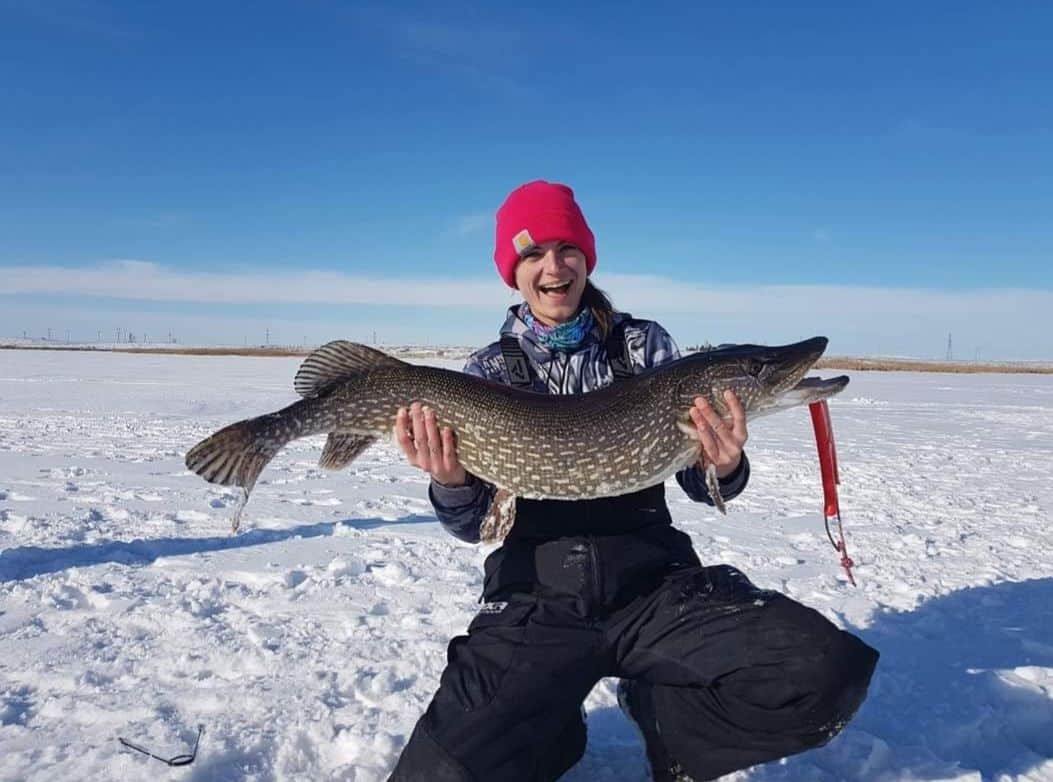
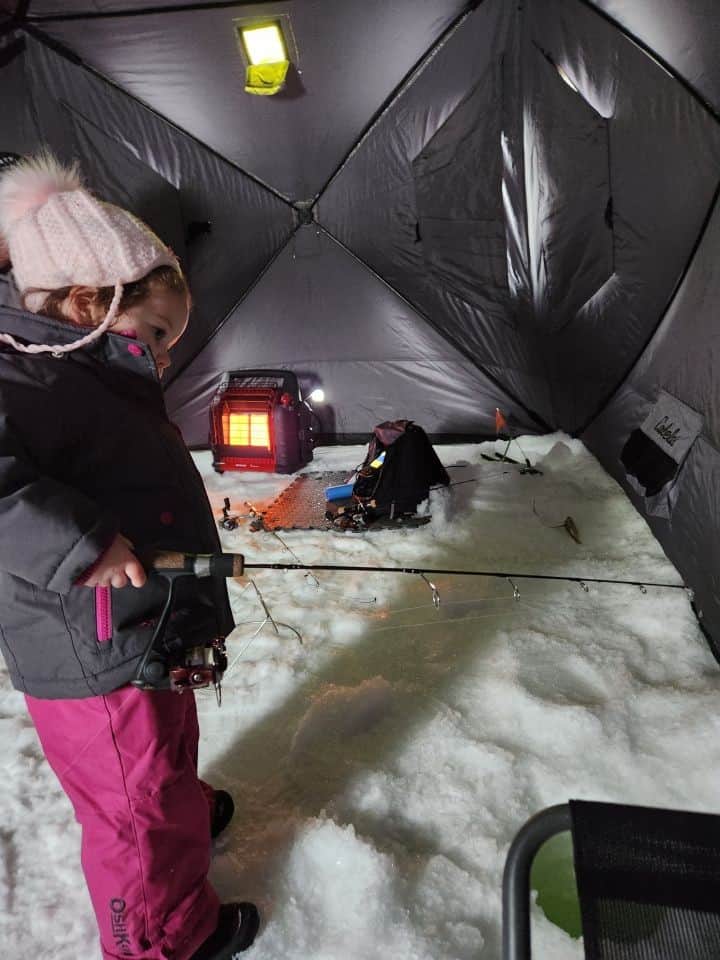
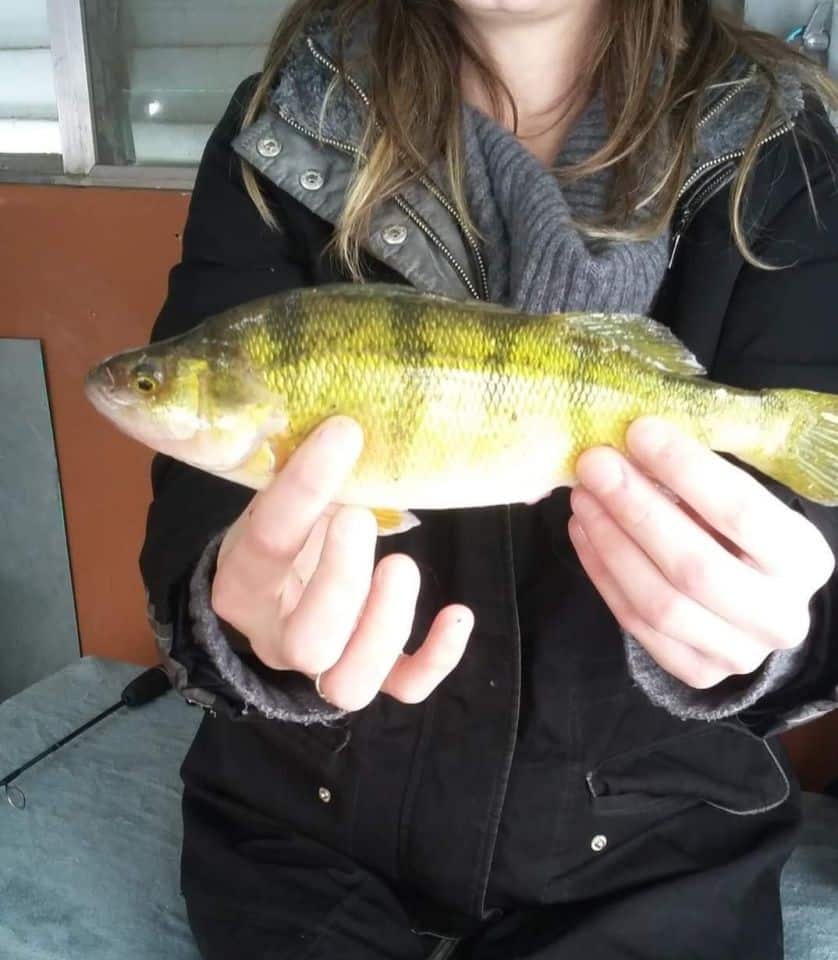
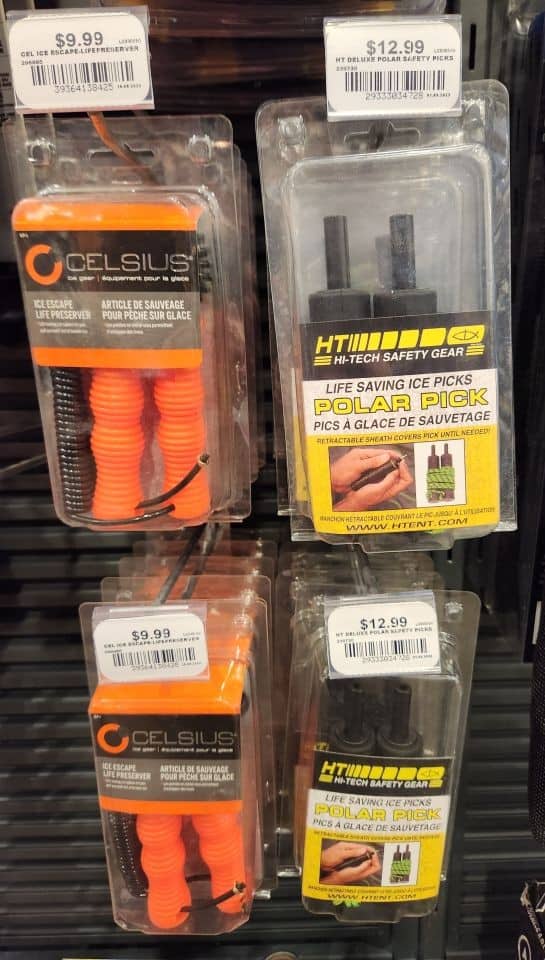
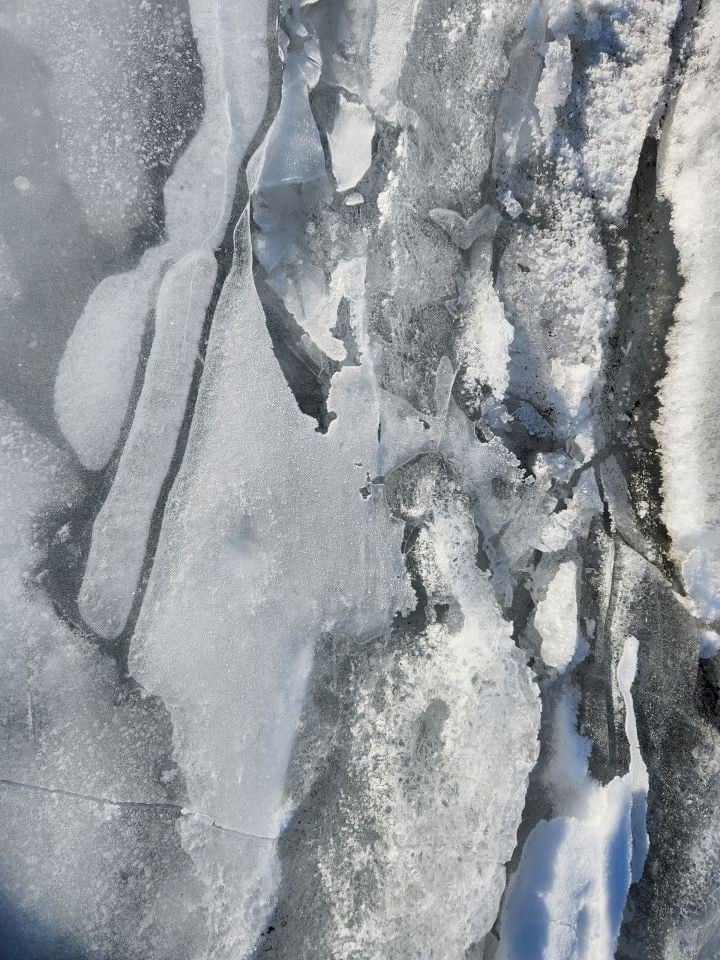
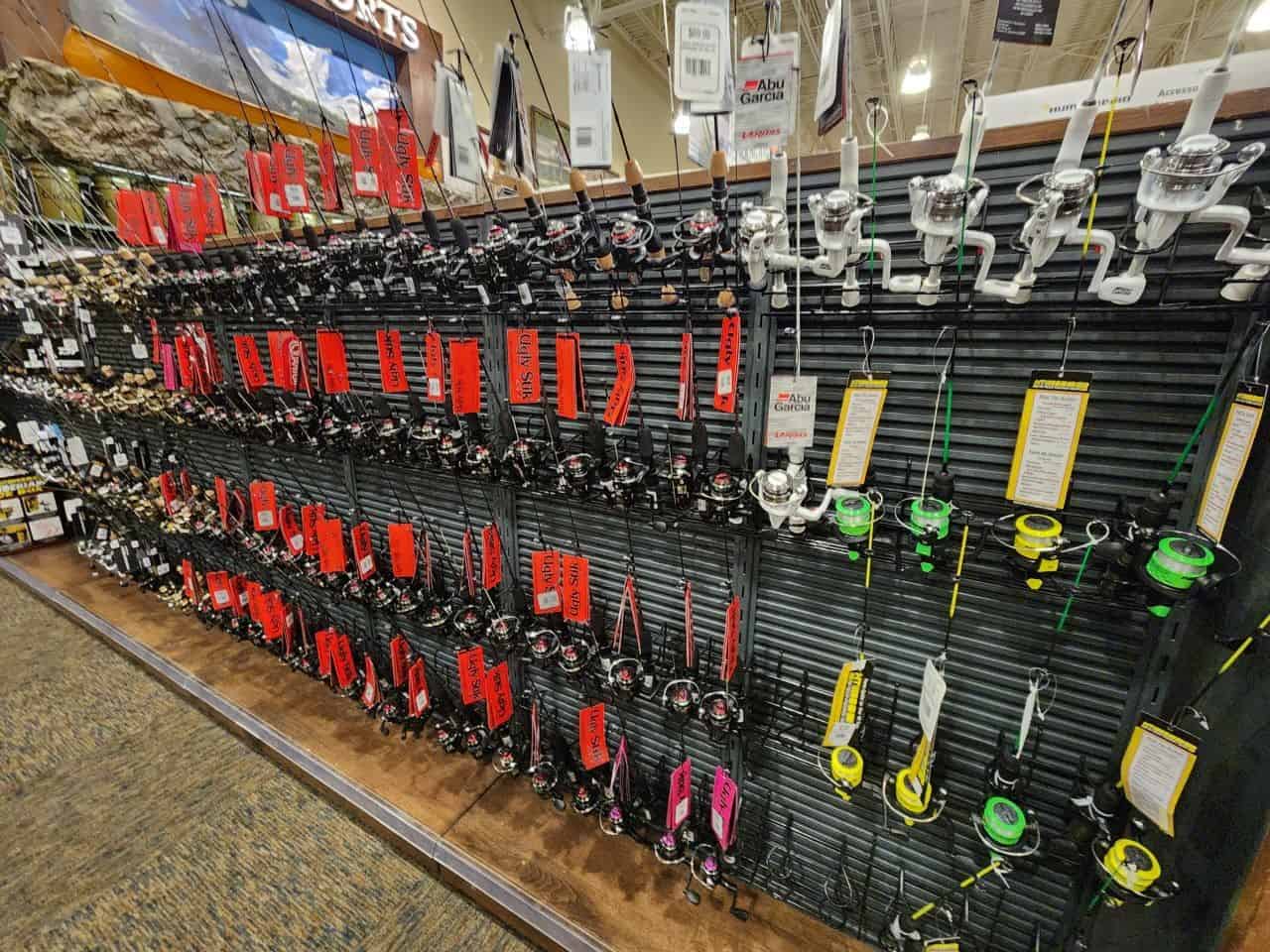
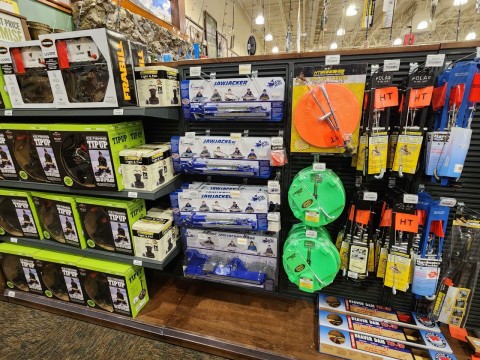
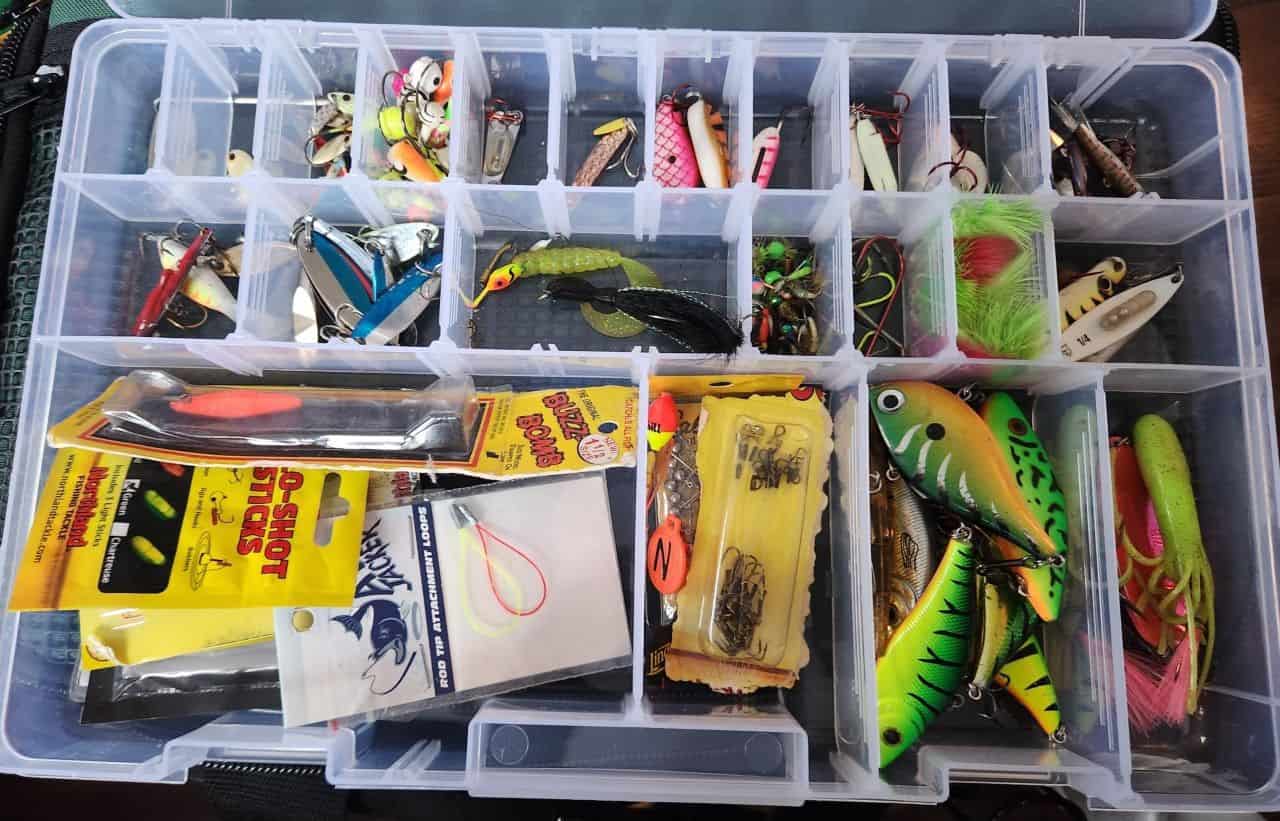
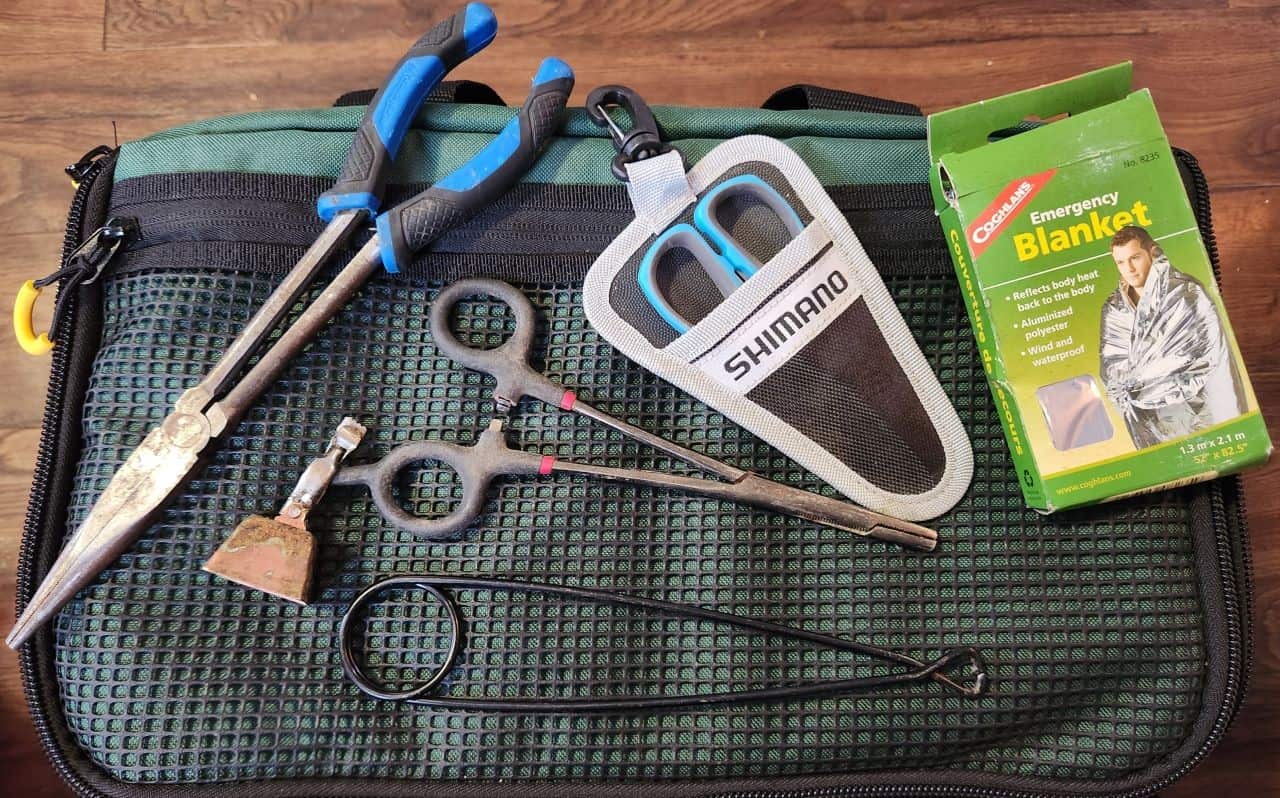
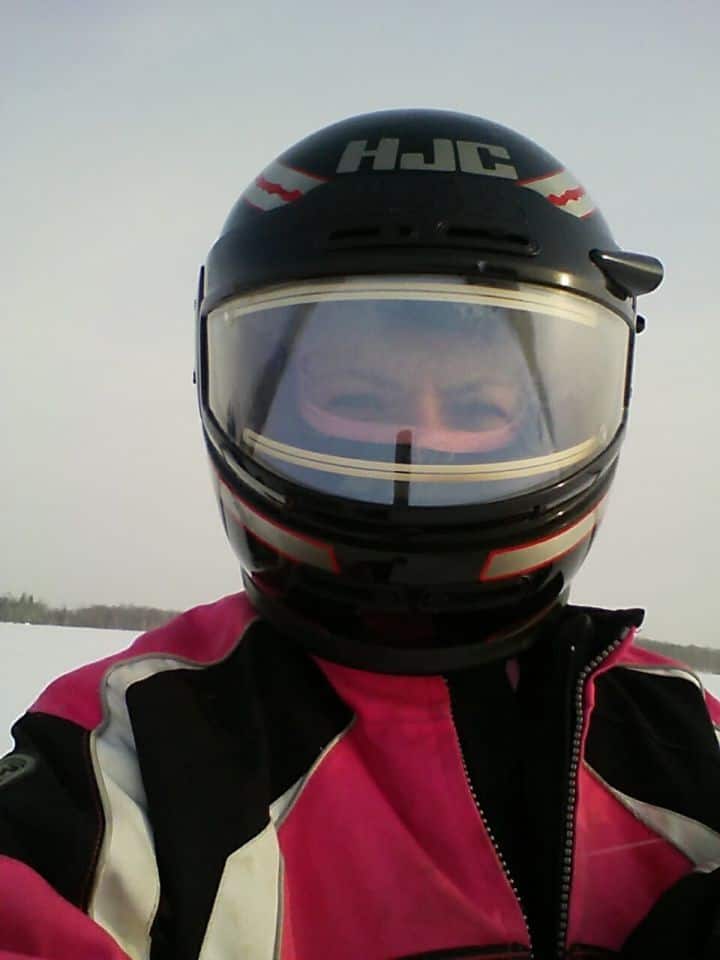

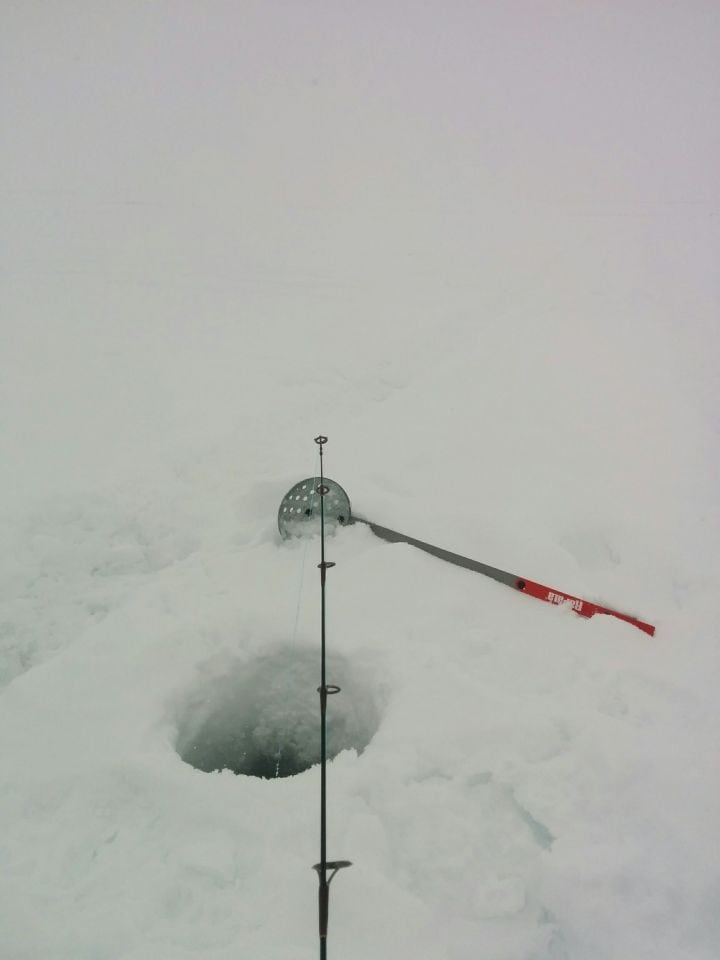
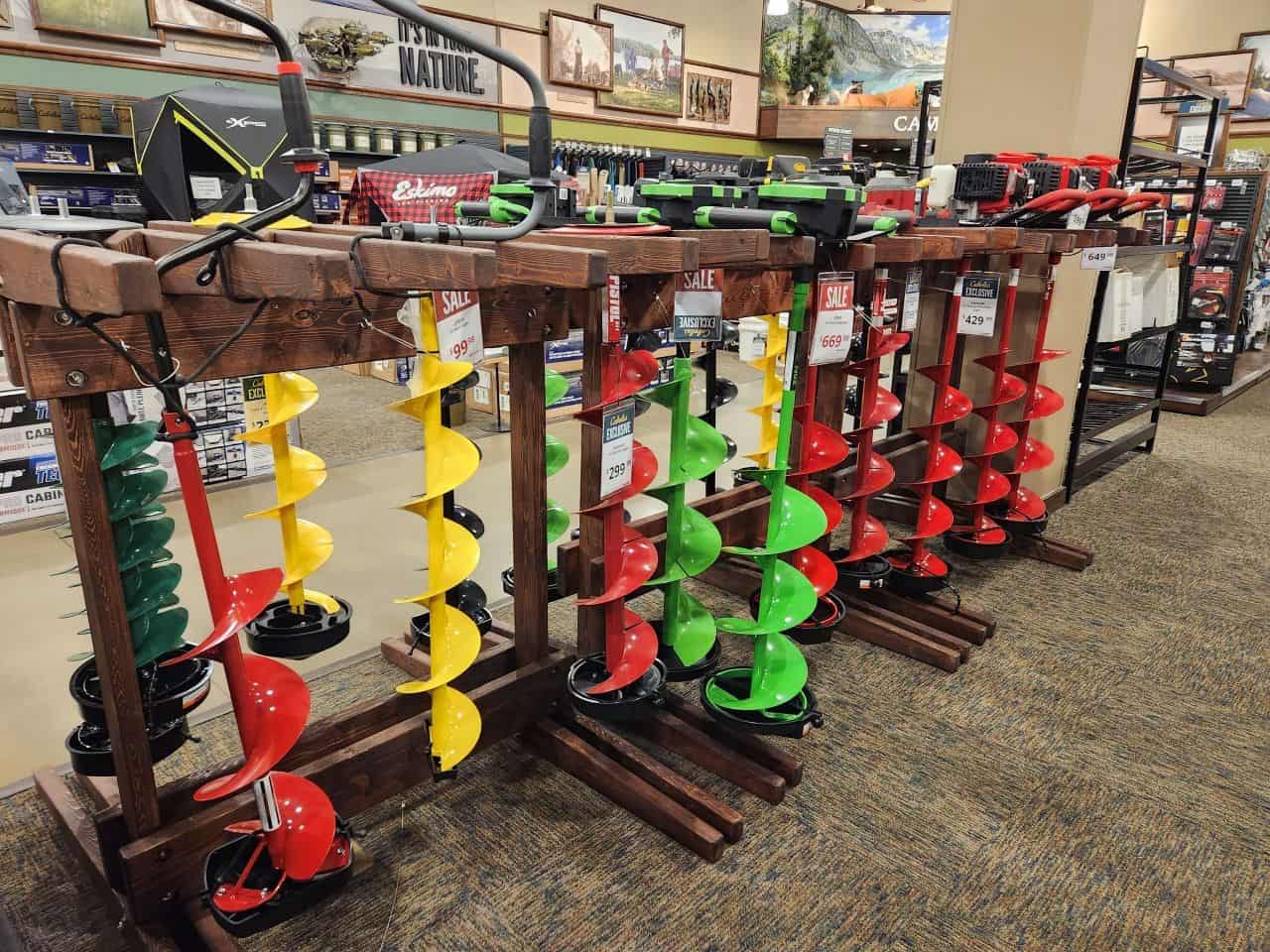
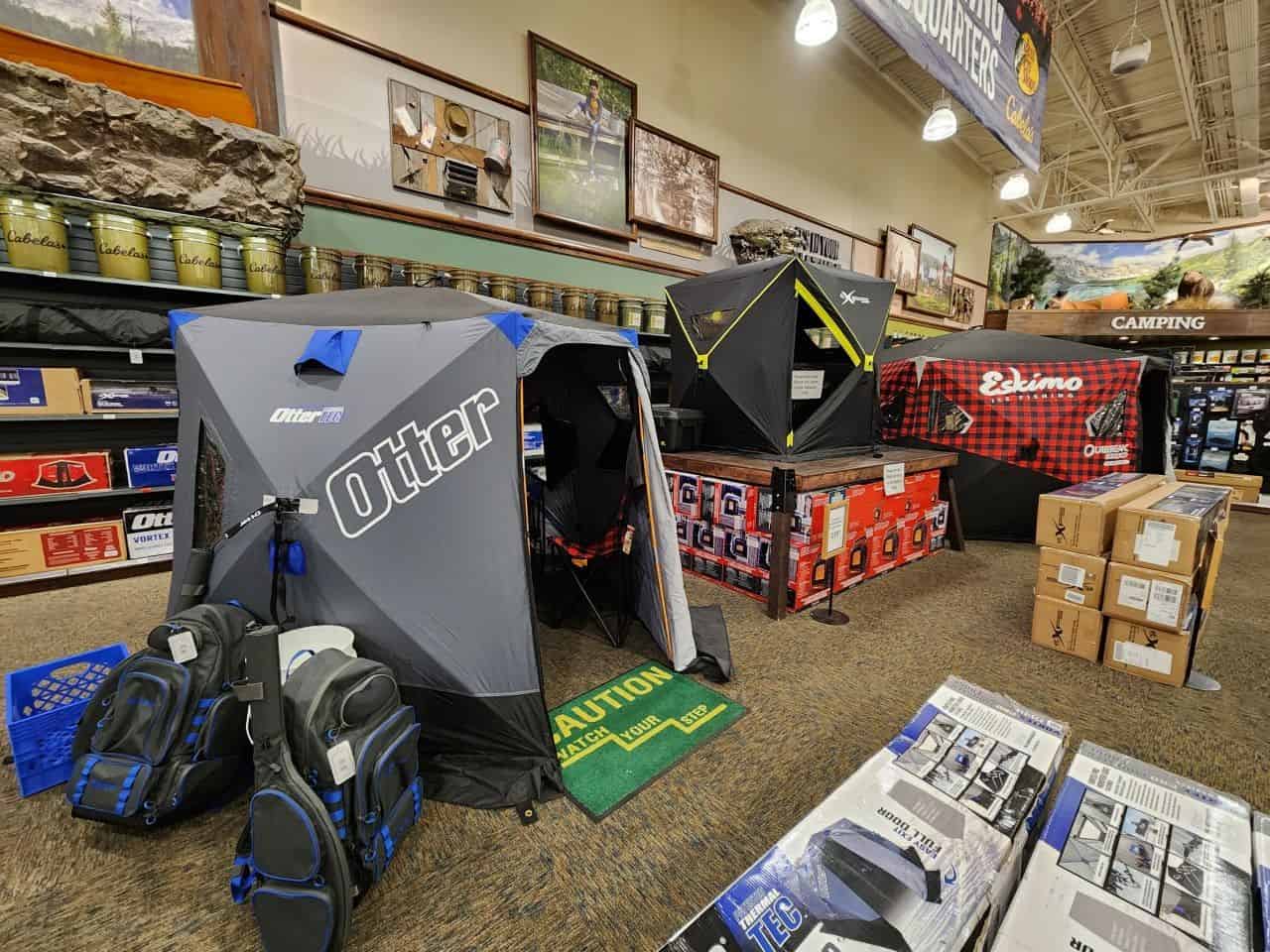
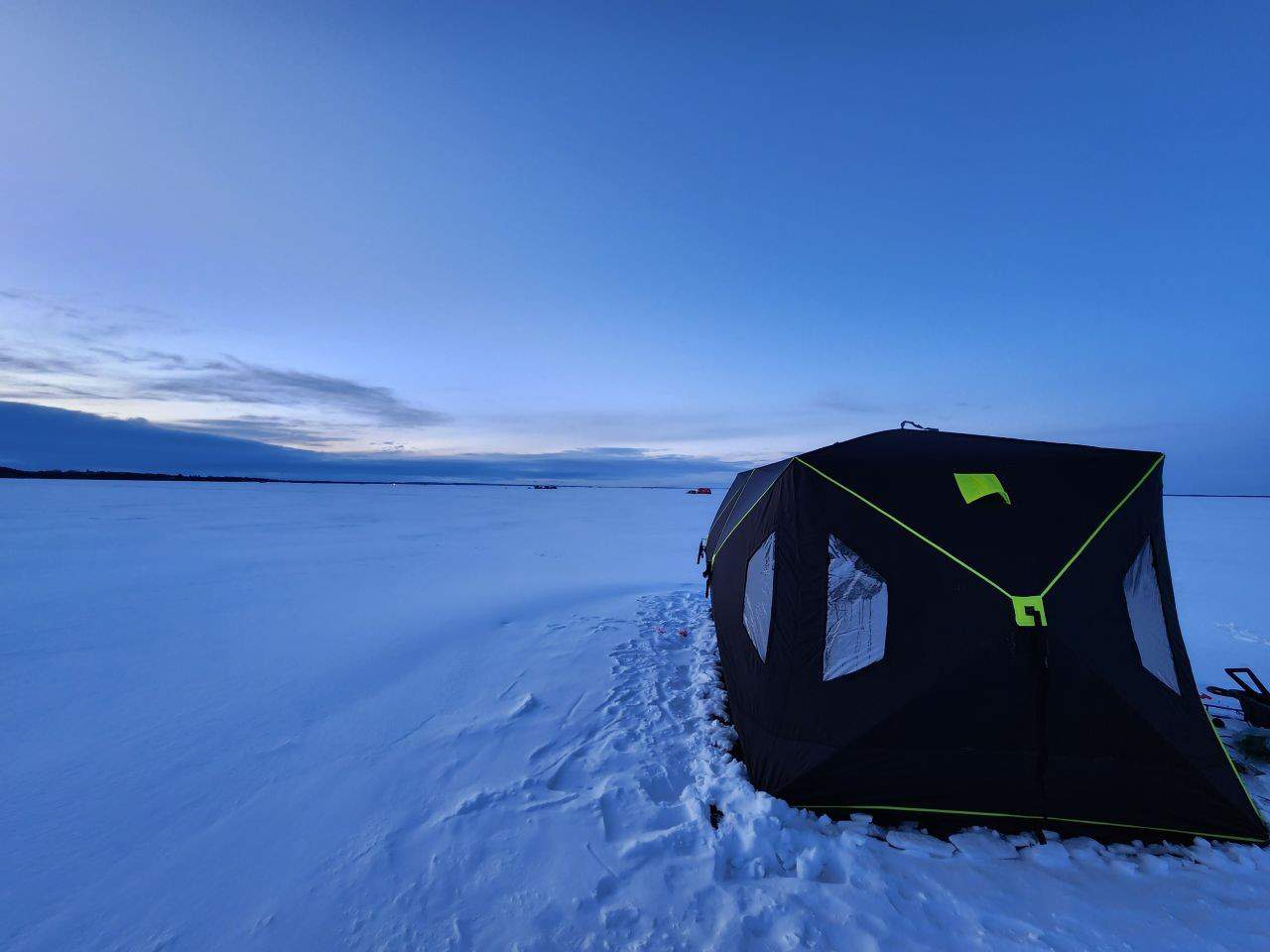
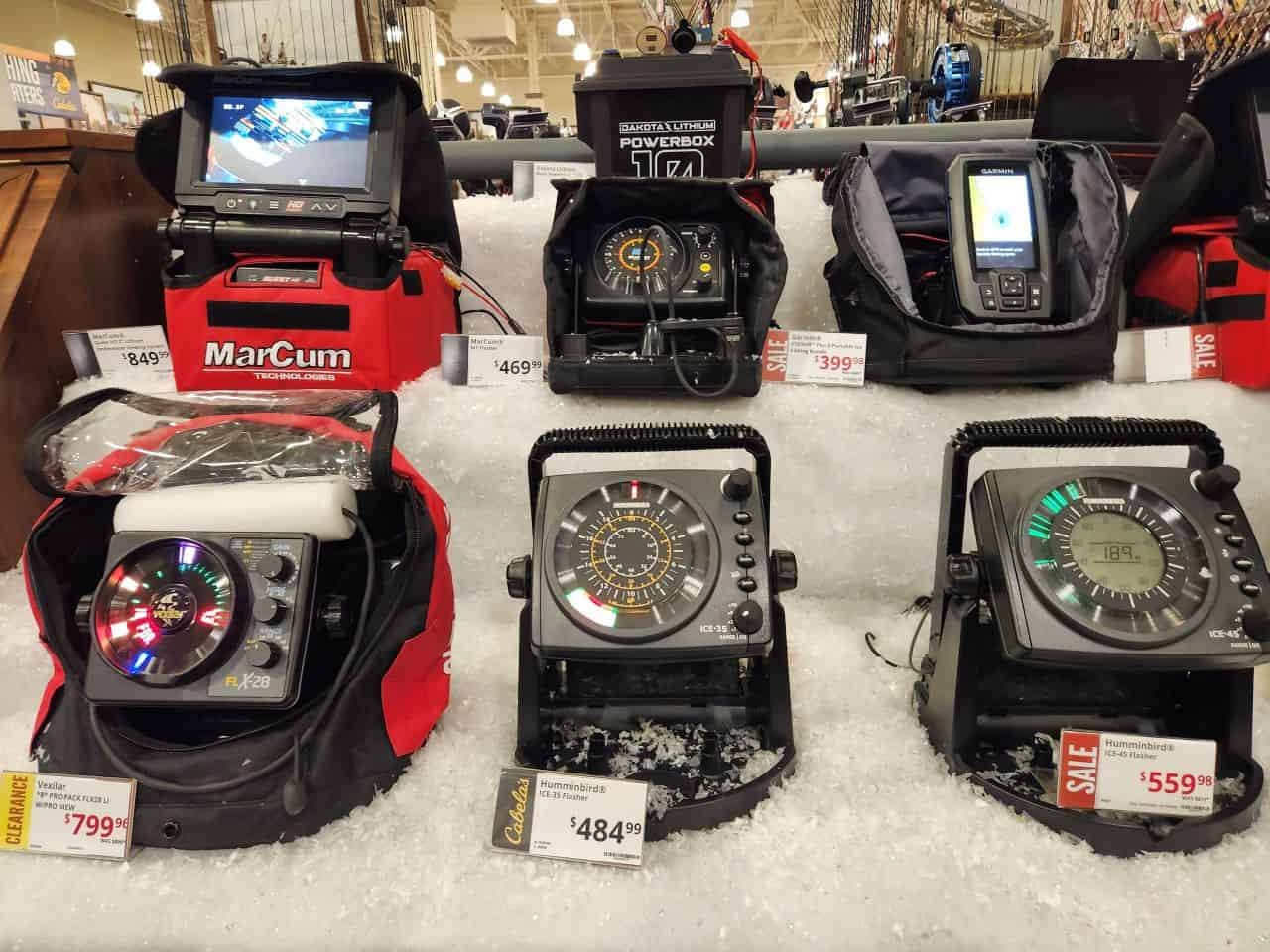
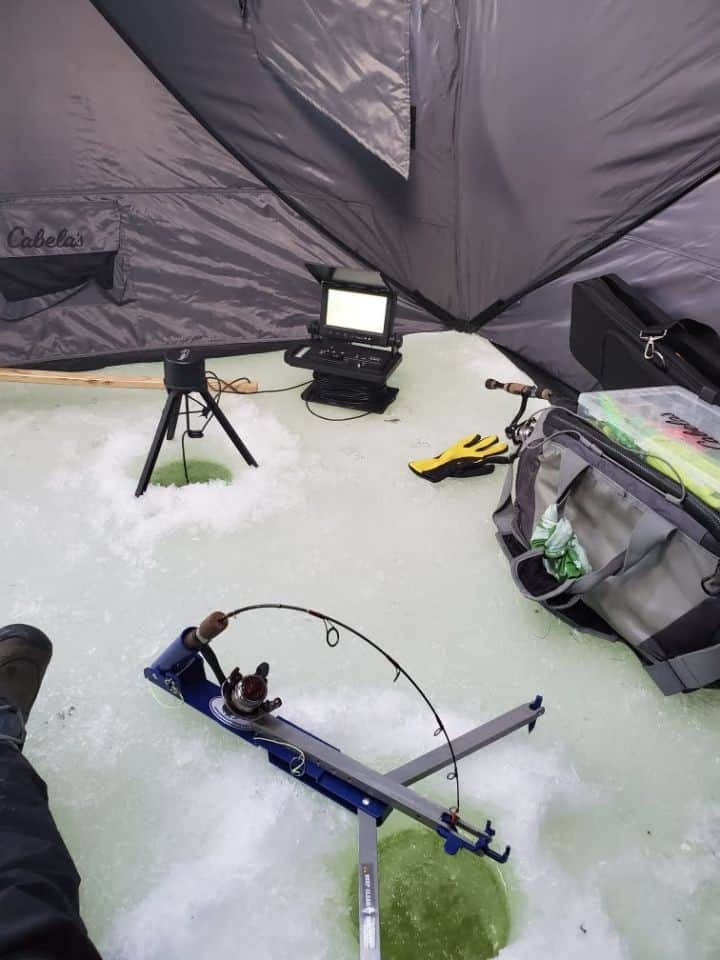
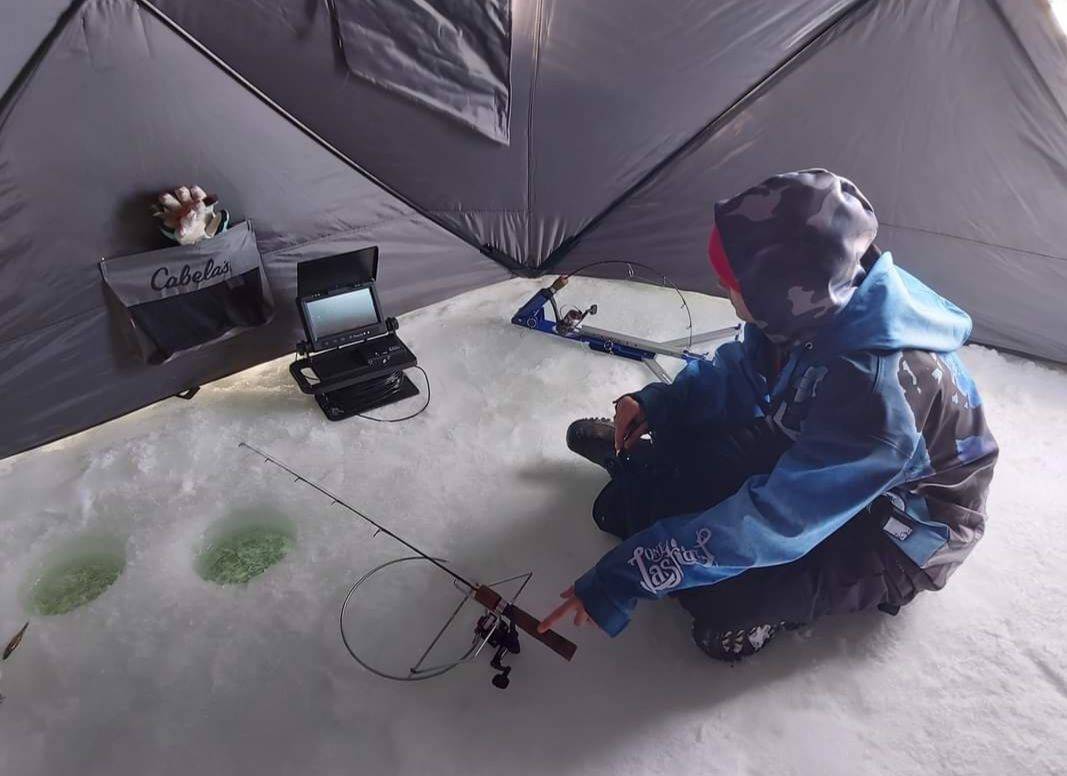

Comments 13
Fantastic tips Ange!
Thank you for this very educational article, Andrea! I laughed when I read about the cot, but what a good idea for relaxing, changing position and keeping up off the ground. I would love to see a video of what the fish are doing under that ice, certainly safety first and lots of things to consider and gear to buy with this sport! Great article I am all keen to go!
Thanks! It was fun putting this together. Napping on the ice is fantastic haha must have a cot. I had to get another because the little seeker likes to perch up on there now. If you're ever in my area during ice season, I'd love to take you ice fishing
AMAZING! Now that would be an experience of a lifetime, I would love that! How long does the ice fishing season last? I imagine ice would start to thin end of February?
Ice season here in Alberta is typically from mid December to mid March. We had a late start this year and need more cold spells to keep the ice we got last week. But it would be super fun to get you out there sometime
Cary Horning Thanks!
Awesome list of haves and have-nots of ice fishing. This is a very helpful article for ice fishing.
EH Canada Marketing Group Thank you! Glad you enjoyed it. I was going to do a basic list, then thought why not just share it all!
Great article! Read this and then read "10 Easy to Find Ice Fishing Locations in Southern Alberta Canada" and you will be set!
Kim Kenyon Thanks!
We are an ice fishing meca with over 100 lakes. This would be helpful to many here.
Tourism Nicola Valley - Merritt BC Thanks so much! Really appreciate that. Hopefully helps a few beginners gain the confidence to get out and try ice fishing. I'd love to come your way one day soon to explore some of those lakes!
Really great article Andrea! You are the Canadian ice fishing queen! Very informative!